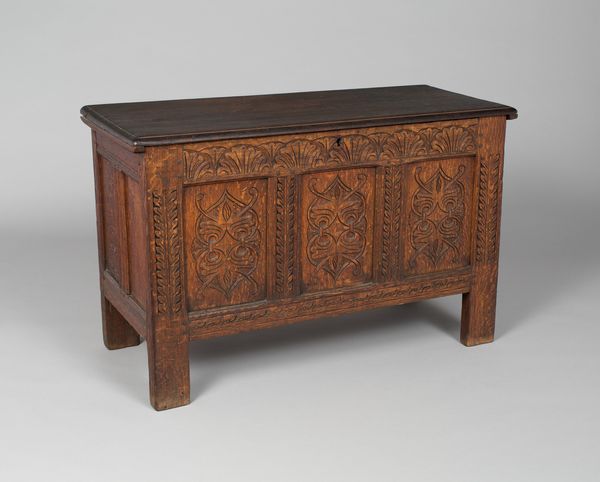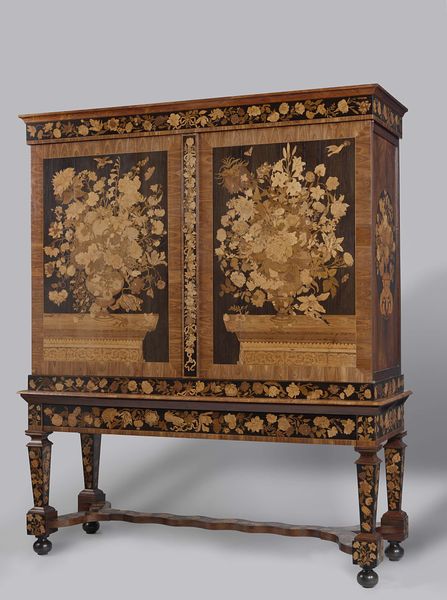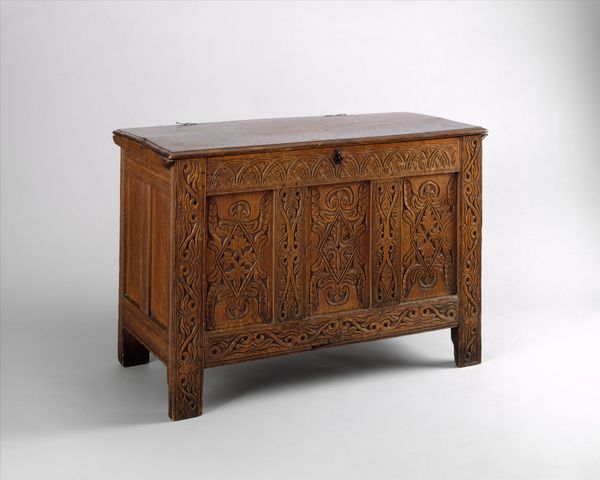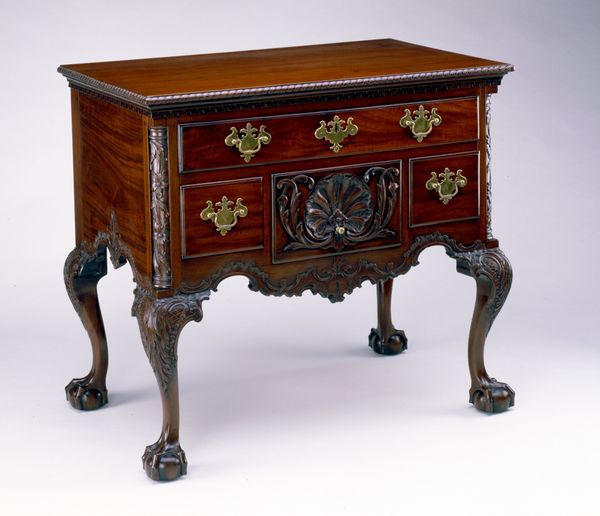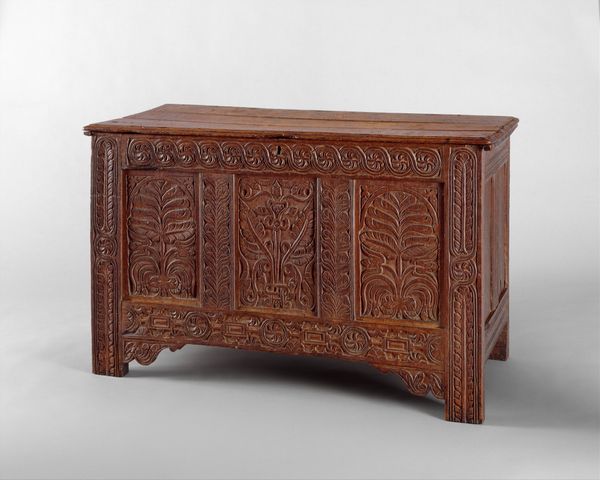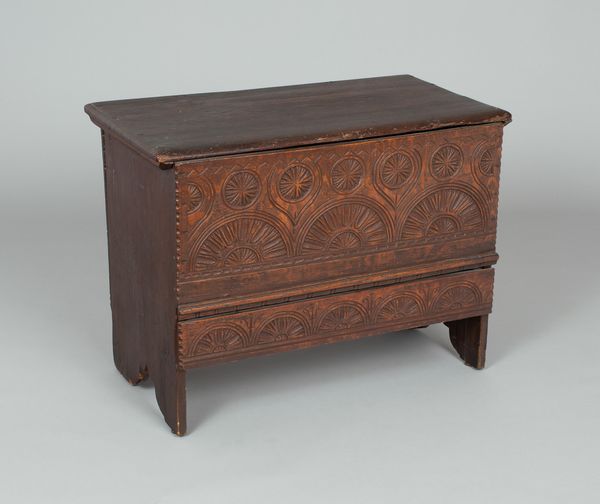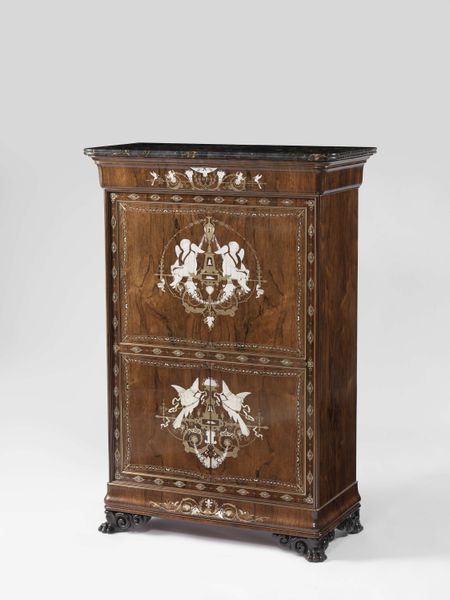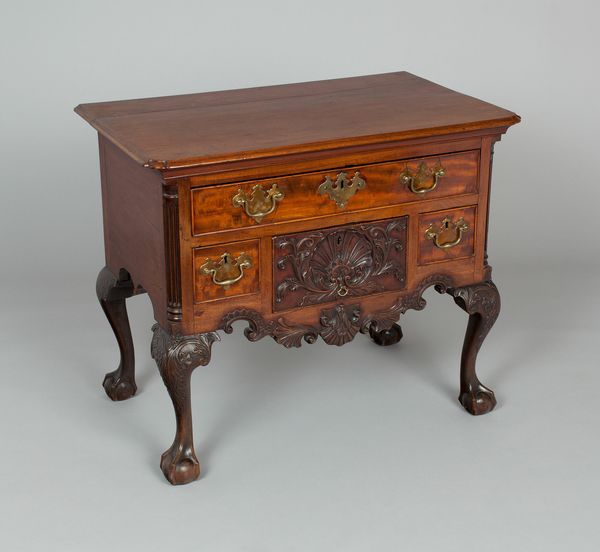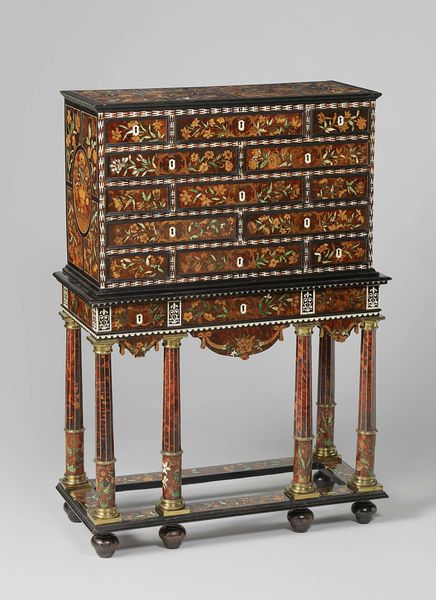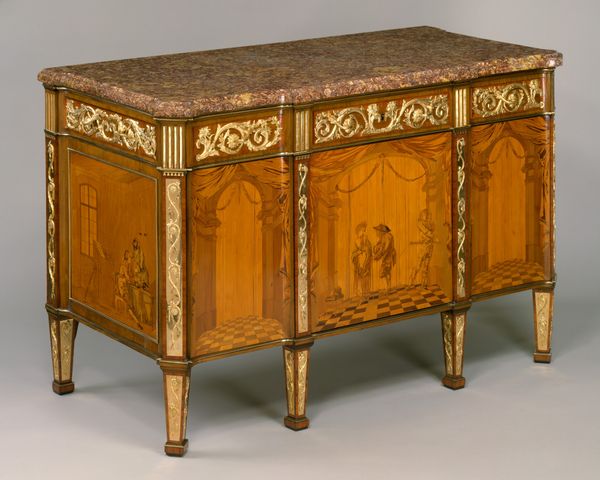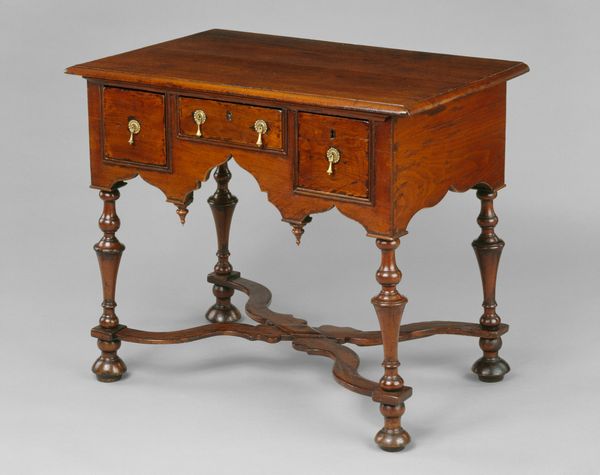
ornament, carving, wood
#
wood texture
#
ornament
#
carving
#
baroque
#
wood
#
decorative-art
Dimensions: height 65 cm, width 104 cm, depth 40 cm, height 80 cm, width 111.5 cm, depth 44 cm, height 145 cm, width 111.5 cm, depth 44 cm
Copyright: Rijks Museum: Open Domain
Curator: My first impression is that this piece exudes luxury, but also meticulous constraint—all those twisting lines somehow held in perfect balance. Editor: Indeed. What you are observing is "Cabinet of Amalia von Solms," dating roughly from 1652 to 1657. It’s a carved wood cabinet featuring intricate ornaments, exemplifying the Baroque style. Curator: Baroque for sure, but the pale, almost ghostly floral carvings against the darker wood are striking. Is there a particular meaning behind those motifs? Editor: Considering Amalia von Solms's position, these floral patterns were highly symbolic. As a politically active woman within the Dutch court, flora was a commonly associated visual vocabulary representing the family's ability to foster wealth and societal beauty around them. Her cabinet thus becomes more than a furniture piece, but an advertisement of prosperity, stability, and cultural refinement. Curator: So, these aren't simply decorative flourishes but encoded claims to status and authority through nature? And the sheer detail, what does that suggest? Editor: Absolutely. Every twist, every curve speaks to the cabinetmaker's skill and, by extension, Amalia’s cultivated taste and resources. But think too of the societal context. The Baroque style flourished during a time of significant religious and political upheaval in Europe. The emphasis on ornate detail and dramatic visual effects served, in part, to reinforce power and grandeur during uncertain times. Curator: Fascinating! So, an assertion of steadfastness. I suppose this brings me back to my first point; it felt as though it was luxurious and well composed. Seeing how Amalia herself used floral ornamentation, it feels less restricted now. This would serve to act as a continuous signifier to outside political influences in Europe. Editor: Exactly! What was that, an emotional insight that was initially a spontaneous observation. Its design cleverly weaves together political messaging, aesthetic preferences, and craft tradition of that era to make for a statement piece. Curator: Understanding all this, it is interesting how such symbolic ornamentation is always being implemented to push certain public and political figures through decorative elements. Editor: Yes, visual and material cues are almost always indicative of subtle pushes or undertones that would go unacknowledged to the public without analysis.
Comments
rijksmuseum about 2 years ago
⋮
This cabinet was made for Amalia von Solms, widow of Stadtholder Prince Frederick Henry. The marquetry on the doors had a political significance: it alludes to a glorious future for the grandson of Amalia and Frederick Henry, Prince William III (born in 1650). Because William’s father had died shortly before his birth, the fate of the House of Orange depended on the young prince.
Join the conversation
Join millions of artists and users on Artera today and experience the ultimate creative platform.
